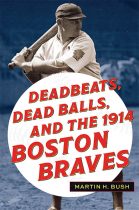The Danse Macabre of Women
Ann Tukey Harrison | Filed under: European & World History
The Danse Macabre of Women is a 15th-century French poem found in a lavishly illuminated late medieval manuscript. The only Dance of Death devoted entirely to women, it was written by an anonymous author and subsequently expanded by several poet/editors. In this version, one of the later productions, 36 women are called in the midst of their bustling daily lives to join the eternal Dance of Death. Young and old, rich and poor, widow, matron, and child—each is the focus of two short poelms written in the form of a dialogue (Death calls and the victim replies) and accompanied by an illumination (or a miniature).










